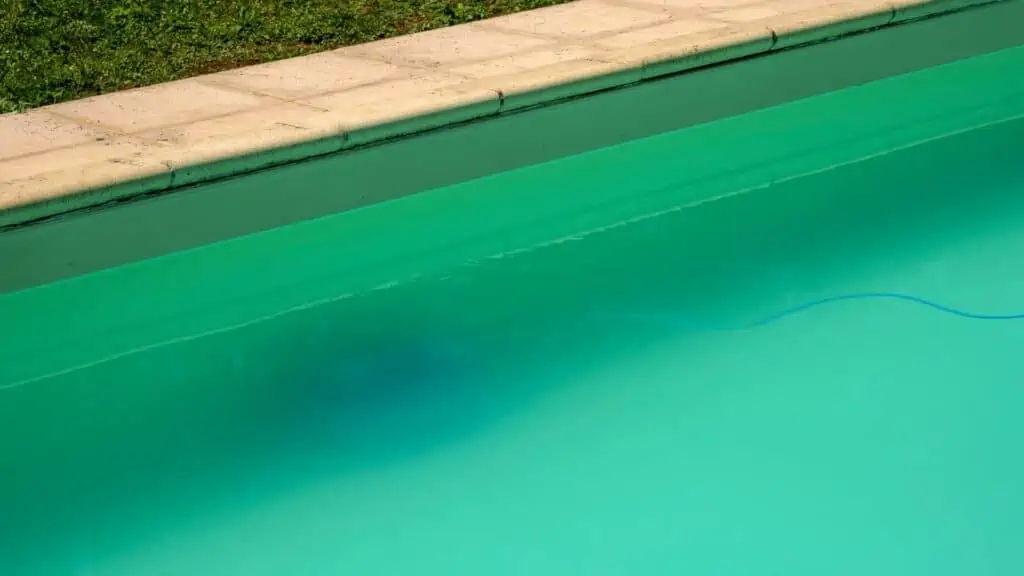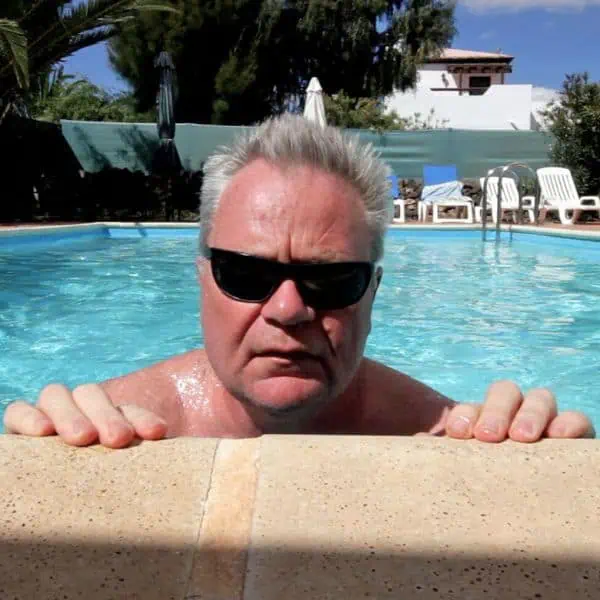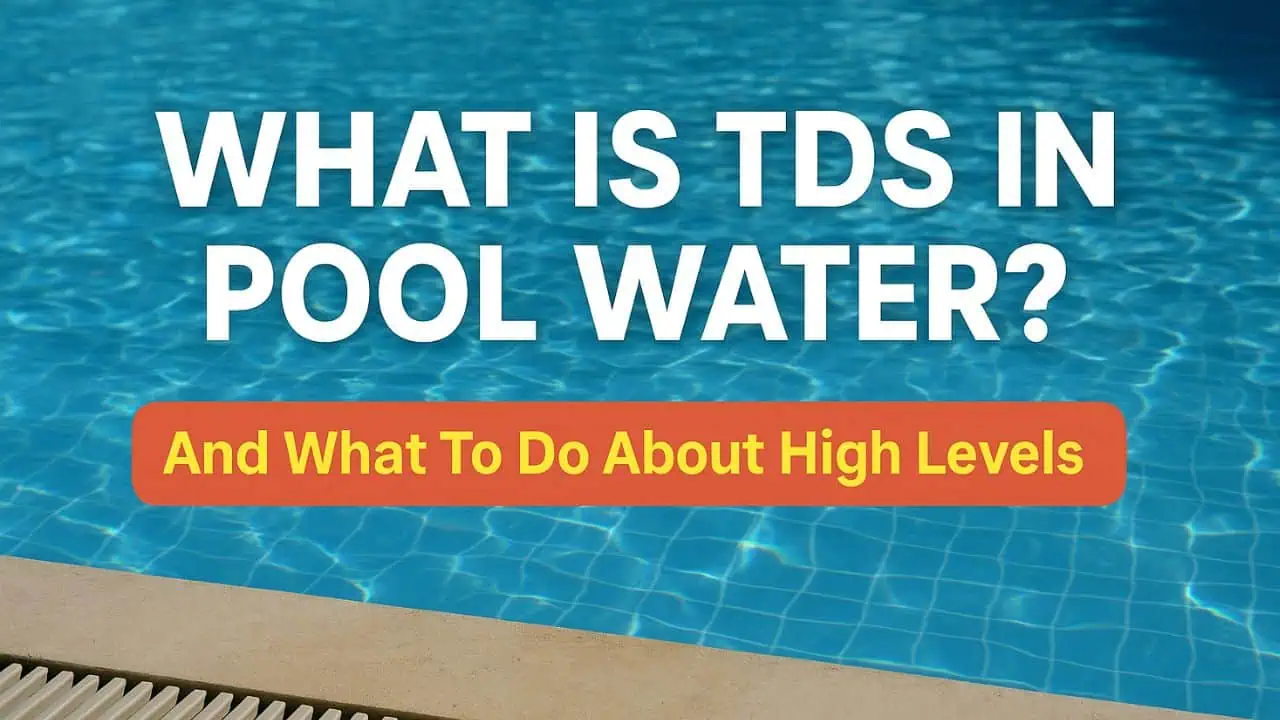Are you tired of looking at cloudy, murky pool water? Do you wish your pool could have that sparkling, crystal-clear look year-round?
Look no further than pool flocculant!
This powerful chemical agent can help you achieve the clear, pristine water you dream of.
But how do you flock to a pool?
In this post, we’ll walk you through everything you need to know about using pool flocculant to get your pool looking its best. From dos and don’ts to common mistakes to avoid, we’ve got you covered.
Get ready to say goodbye to cloudy pool water and hello to a summer of swimming in style!


Pool Flocculant
Pool flocculant is a chemical substance used to coagulate and settle suspended particles in swimming pools. It helps to clear cloudy water and improve water clarity.
Pool flocculants bind tiny particles together, making them easier to remove through filtration or vacuuming, resulting in a cleaner and more inviting pool.
When to use pool flocculant
Pool owners should consider using a pool flocculant if the pool water still seems dirty despite regular maintenance.
Generally, pool filters are handy at doing their job and manage to pull out dead algae and insects. However, they are not great at dealing with microscopic debris and other small particles. This may include viruses, algae growth, and other bacteria.
Flocculants contain coagulant agents that gather dirt particles into clumps, making it easier for pool owners to see the debris more clearly. As the clumped particles tend to settle on the pool floor, it is easier to vacuum out of the pool.
How to use flocculant: A step-by-step guide
It may seem daunting, but flocking a pool with a sand filter is relatively straightforward. Look at our easy guide below to bring your pool water back to being clean and sparkling.
- Test your pool water using a pool water test kit to ensure that the pH and chlorine levels are within the recommended range. Adjust the pH and chlorine levels if necessary.
- Filling your pool to the maximum using a hose is advised as this process requires vacuuming to waste, which means water will flow out of the pool, and the water level will drop.
- Carefully pour the recommended amount of pool flocculant into the pool. How much flocculant to add to the pool will depend on the size of your pool, so be sure to read the manufacturer’s instructions carefully.
- Turn on the pool pump and let it run for 2-4 hours to distribute the flocculant throughout the pool evenly.
- After the recommended time has passed, turn off the pool pump and let the water sit undisturbed for several hours (typically 12-24 hours). This will allow the flocculant that has combined with the small particles in the water to settle at the bottom of the pool.
- Using a manual vacuum with the multiport valve set to waste, carefully remove any debris or sediment that has settled on the bottom of the pool. Work slowly and carefully to avoid stirring up the settled sediment.
- Once the sediment has been removed, use a skimmer net to scoop up any remaining debris on the pool’s surface.
- If necessary (it probably will be), top the pool water up to the correct level.
- Turn on the pool pump and run it for several hours to allow the water to circulate and filter out any remaining particles.
- Test the pool water again using a pool water test kit to ensure that the pH and chlorine levels are within the recommended range. Make any necessary adjustments before allowing swimmers to enter the pool.
This guide is based on flocking a pool with a sand filter. However, the process is very similar for pools with DE and cartridge pool filters.

Advantages and disadvantages of using pool flocculant
Before purchasing a pool flocculant, look at our list of pros and cons.
Advantages
- It gets to work fast!
If you’re a hopeless procrastinator, then this is obviously for you. Why wait 2-3 days when you can get your pool cleaned up in hours? - It’s effective!
This stuff does get the job done, and while no pool cleaner on the market is 100% effective, flocculant is a close winner!
Disadvantages
- Requires vacuuming the water to waste
Vacuuming to waste isn’t always ideal and can be time-consuming. Sitting around waiting for the water level to increase is just plain dull! - It can’t be used in pools with cartridge systems
As mentioned above, flocculant is a huge no-no unless your filter has a plumbed-in bypass. The dirt and debris collected by the flocculant can clog the filter, which can be costly to fix.
Can you swim with flocculant in the pool?
After adding flocculant to the pool, it is recommended to allow the water to settle for at least 12-24 hours to allow the sediment to settle to the bottom of the pool. If you swim during this period, the sediment will be disturbed and go back into suspension in the water. This defeats the object of using flocculant.
Once the sediment has settled, it can be carefully removed by vacuuming or brushing the pool. After the sediment has been removed, the pool water should be clear and safe to swim in.
It’s important to follow the manufacturer’s instructions carefully when using flocculants and to keep the chemical out of reach of children and pets. Always wear protective gloves and eyewear when handling flocculant, and never add it directly to the skimmer basket or filter system, as this can cause damage to the equipment.
Best pool flocculant: A short review
We have compiled a shortlist of the best-rated flocculant for pools available today. Let’s take a look.
1. HTH Drop Out flocculant swimming pool cleaner
HTC Drop Out will turn your cloudy pool water into crystal clear water. This product quickly gathers dirt and debris overnight to be vacuumed away the following day. The formula does not affect pH levels and is easy to administer.
What we like about HTH Drop Out flocculant swimming pool cleaner
- It can be used in saltwater pools
- HTH sells a variety of pool-cleaning products
- Ideal for pools containing high levels of algae
2. Pool Mate Drop Down liquid pool floc
Pool Mate Drop Down combines organic and inorganic materials to form clumps. Just half a bottle can clear a 24′ round above ground pool in a matter of hours. For best results, make sure the pH level is around 7.2. This product works best when left without interference for eight or more hours.
What we like about Pool Mate drop down liquid floc
- It’s cost-effective
- It is ideal for use in pools that collect pollen from trees that may grow nearby
- Removes particles that may have congealed over time on the surface of the water
3. Maintain granular floc
This powdery substance is ideal if you have a tough job. Maintain Granular Floc requires the user to mix the granules with pool water before pouring the solution into your pool.
What we like about Maintain granular pool floc
- It is ideal for use in areas of tropical climate
- Sand filter friendly (provided the filter is regularly backwashed)
- One bottle of Maintain floc for pools will last a long time
Pool flocculant vs pool clarifier
Many people ask is pool clarifier the same as flocculant, which is a fair question.
Flocculant vs clarifier: Pool flocculants and pool clarifiers are both used to improve the clarity of pool water, but they work in different ways.
Pool flocculant is a chemical that causes fine particles and sediment in the water to clump together and settle at the bottom of the pool. Once the particles have settled, they can be easily removed by vacuuming or brushing the pool.
Pool flocculant is typically used when the water is cloudy or hazy, and there is visible sediment or debris in the pool.
Pool clarifier, on the other hand, works by coagulating small particles in the water so that they can be trapped and removed by the pool’s filtration system. This helps to improve the overall clarity of the water.
Pool clarifier is typically used when the water is clear but there are still small particles or impurities that are causing the water to look dull or hazy.
Can I use clarifier after flocculant? You can once you have vacuumed between using flocculant and pool clarifier.
How to use pool clarifier
Pool clarifiers are the best option to maintain your pool long-term. Here’s how to use this product.
- Start by running your filter system for 24 to 48 hours. This will help to clear out any residue before adding the solution.
- If you find the water is still murky or cloudy, add the recommended amount of clarifier. The amount will be based on the volume of your pool.
- Next, you must let the pool sit overnight without any interference. This allows the particles to clump together and sink to the floor.
- In the morning, vacuum the remaining residue from the pool floor, but keep the filter running.
- Look at the pool’s chemical levels; you can swim once they return to normal!
Why pool water becomes murky
You may have cloudy pool water for many reasons, and it’s not primarily because of bad weather.
Giving your filter a backwash every once in a while will remove any dirt clogging up the system.
You may need to run your filter system more often. Pool filters should be left running for at least eight hours a day, but try leaving it for 10-12 hours to see if this makes a difference.
An imbalance in pH levels may be the cause. If so, you may need to purchase a pH-reducing chemical to help clear up murky waters.
It is important to test the pool chemicals, particularly chlorine levels, regularly. Low chlorine, or bromine, can cause algae growth, turning the water cloudy over time.
Flocculant FAQs
Can you put too much clarifier in a pool?
Adding too much pool clarifier can be detrimental. If you make this mistake, the best thing you can do is filter it out. Alternatively, you can drain and refill; however, this is long-winded and time-consuming. Do you want our advice? Just don’t put too much in.
Can you put too much floc in a pool?
Adding too much flocculant to your pool can be damaging as the floc can begin to agglomerate with itself and form clumps. This defeats the object of using the chemical in the first place!
How long after adding flocculant can you swim?
We recommend holding out for 2-4 hours after flocking your pool. Remember, flocculant is a chemical that can irritate and even burn your skin. Similarly, the chemical may not be as effective if you are in the pool as the water needs to be still to disperse itself evenly.
How often should I floc my pool?
Pool flocculants should be added to the water regularly for general maintenance. Taking care of your pool also covers the filter system, which can be costly if it gets clogged up.
Can I use clarifier and flocculant at the same time?
You shouldn’t use these products at the same time. However, they can be used one after the other. It is important to remember that using too many chemicals can be detrimental to your pool’s environment.









Leave a Reply